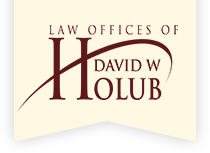Restoration Damages
I’m David Holub, an attorney focusing on personal injury law in northwest Indiana.
Welcome to Personal Injury Primer, where we break down the law into simple terms, provide legal tips, and discuss personal injury law topics.
Today’s question comes from a caller who suffered damage to a barn and several trees when a fire negligently started by a neighbor caught the barn and trees on fire. He wondered if he would be entitled to recover the cost to restore the property and, if not, what the law would permit him to recover.
This may seem like a simple question to answer, but it is not.
Suppose the barn that caught fire was in terrible shape. Before the fire, if the barn had been sold separately from the real estate, it could have sold for $50,000. But rebuilding and restoring the barn will cost $250,000. If the wrongdoer pays the owner of the barn $250,000, the barn owner would arguably be better off than he was before the fire.
The caller also mentioned trees were destroyed by the fire. Trees may not be easy to restore. How do you restore 250-year-old hardwood trees? If you make the wrongdoer pay the price of the lost hardwood, the real estate would be left without beautiful trees that significantly increase the real estate’s sale value.
So, when do courts permit a party to recover restoration damages, and when do they not require the wrongdoer to pay restoration costs?
In Indiana, in most cases, restoration damages can be recovered for temporary injuries to things severable from real estate, such as trees and buildings.
Where there has been an injury to real estate, the proper measure of damage is:
(1) if the injury is permanent, the measure of damages is the market value of the real estate before the injury, less the market value after the injury.
(2) if the injury to real estate is not permanent, then the measure of damages is the restoration cost.
But how do we distinguish between permanent and non-permanent damage?
In cases where the real property is temporarily damaged, the owner’s recovery of the restoration cost may lead to a windfall where the cost of restoration far exceeds the property’s diminution in value.
Recognizing the possibility of this windfall, courts have considered an injury to property as “permanent” where the restoration cost exceeds the market value of the buildings before the injury.
In most cases, the fair market value of buildings can be readily determined and limiting the plaintiff to this amount of recovery would be reasonable.
Thus, where the property is repairable or restorable, damages may be proved:
(a) by proof of the difference between fair market value immediately before and immediately after the traumatic event, or
(b) by evidence of the cost to repair or restore the property, accompanied by proof
(1) of the actual physical damage to the property sustained as a proximate result of the traumatic event,
(2) that the cost to repair such damage was reasonable, and
(3) such cost to repair bears a reasonable relationship to the difference between the fair market value of the property just before and just after the traumatic event.
All at the option of the party whose property was wrongfully damaged.
I hope you found this information helpful. If you are a victim of someone’s carelessness, substandard medical care, a product defect, work injury, or another personal injury, please call (219) 736-9700 with your questions. You can also learn more about us by visiting our website at DavidHolubLaw.com – while there, make sure you request a copy of our book “Fighting for Truth.”

Recent Comments